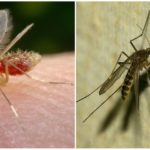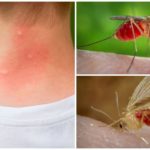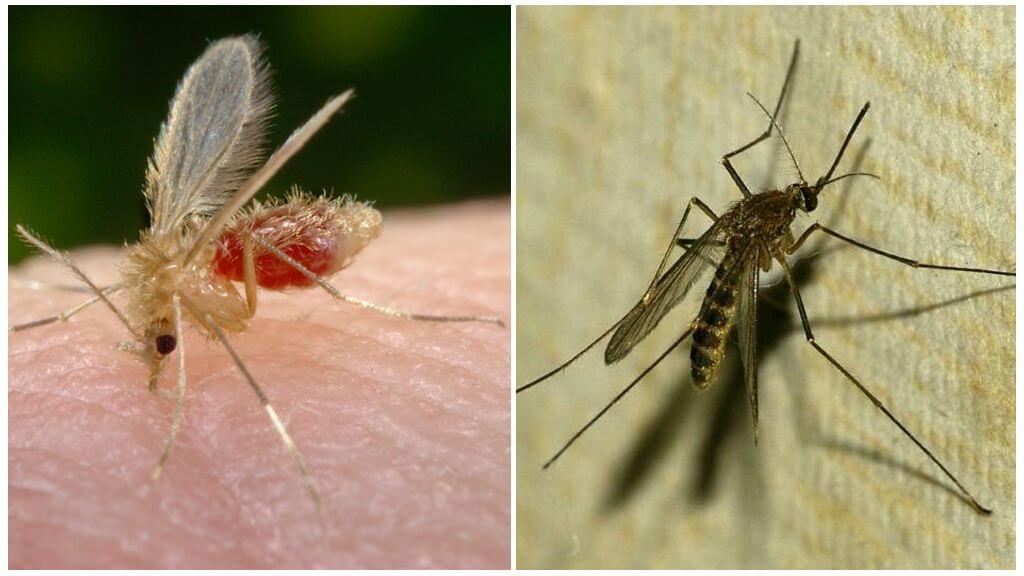What is the difference between mosquitoes and mosquitoes?
Content
- Mosquito and mosquito
- Insect bites
Very often you can hear the familiar phrase "mosquito net", "mosquito repellents", which are used in mosquito control. But this does not mean that the mosquito and the mosquito are the names of the same insect. They have noticeable differences in many ways.
Differences in appearance
Mosquito and mosquito differ in appearance. This fact can be confirmed by looking at insects even with the naked eye.
- The mosquito has a body size in length not more than 3 mm, when mosquito on average reaches 5-10 mm in length.
- Most mosquitoes have a nondescript gray body color. Mosquitoes can be in different shades from white to black, including yellow and ginger.
- Another important difference between a mosquito and a mosquito is the position of its wings relative to the body. In a small bloodsucker at rest, the wings are located at a right angle to the body. And the mosquito they are almost parallel to the body.
Mosquito body structure It has similar proportions: long thin legs, small oblong body, long proboscis for the extraction of food, long antennae, small wings.
On a note!
During the flight, mosquitoes move more awkwardly, but do not emit mosquito-peep. Therefore, to notice it in the dark will not succeed.
The habitat of mosquitoes and mosquitoes
Mosquitoes live almost all corners of the planet, with the exception of the extreme regions of the south and north poles. They prefer wet places, standing bodies of water and a relatively warm climate. But in the conditions of severe winters, some representatives of mosquito species may hibernate and wait out unfavorable time.
Mosquitoes live in warm countries with tropical climates.They are found in Asia, Africa, Latin America, in southern Europe. In Russia, you can become a victim of a mosquito, being in the subtropical regions of the Caucasus, Abkhazia, Krasnodar Territory. Mosquitoes also need proximity to a freshwater source.
Breeding nuances
The difference between the mosquito and the mosquito can be traced in the features of reproduction. Most species of mosquitoes breed their offspring directly in the water. They lay eggs there, which later turn into maggots. The larvae feed on microorganisms and small algae of the reservoir, then turn into a pupa. From the stage of the pupa, the mosquito turns into a formed individual and takes off from the surface of the water.
Interesting!
Some species of mosquitoes lay eggs in the soil. Maturation of all stages occurs in the ground. The larvae feed on plant particles or roots there.
Mosquitoes grow their offspring in well-hydrated soils rich in organic compounds. Scientists studying these representatives of dipterans noted that females prefer to lay eggs near manure heaps and garbage dumps. Voracious larvae absorb the surrounding organic waste.
Insect bites
Both types of bloodsuckers are dangerous to humans and other creatures. Depending on the gender mosquito diet is different. The females of these insects for the formation of eggs in their bodies must feed on blood. Males are harmless creatures that feed on the nectar of plants.
The mosquito female, before biting its prey, makes several jumps on the skin, then plunges its proboscis under the skin. During a bite, she injects a blood thinning agent, like a female mosquito.
Mosquitoes are carriers of dangerous diseases:
- leishmaniasis;
- mosquito fever;
- bartonellosis and others.
The greatest harm they bring to livestock. During the night, huge clouds of mosquitoes can cling to a whole herd of cattle and bring the animals to death. For humans, they are as dangerous as mosquitoes. Both types of insects are similar in some characteristics, but also have certain differences.









